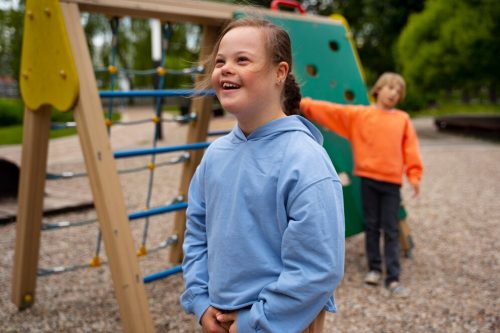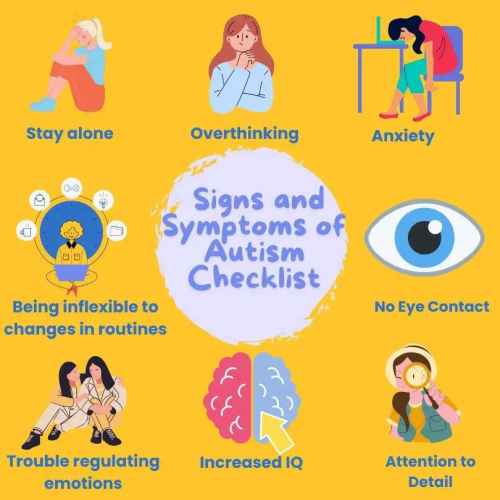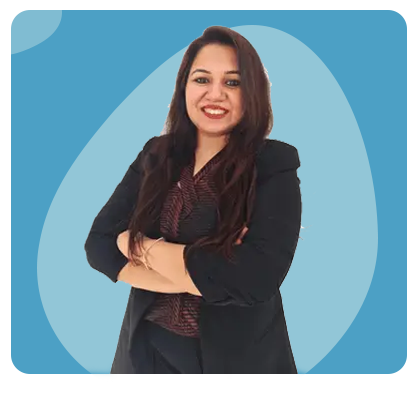Autism Spectrum Disorder (ASD) is a complex neurodevelopmental condition that affects how a child communicates, learns, and interacts with the world around them. Understanding the symptoms of autism in children is the first step toward early intervention and long-term support.
As awareness increases globally, more parents are asking what is autism in children, especially in countries like India where the condition is still misunderstood by many. At Nurturers, we aim to educate families and provide resources to support autism children in India with compassion and expertise.
What is Autism in Children?
Autism in children is a lifelong condition that begins in early childhood. It affects three main areas of development:
- Communication – both verbal and non-verbal
- Social interaction – how the child relates to people and social situations
- Behavior – repetitive actions, intense interests, or resistance to change
Autism is referred to as a “spectrum” because each child with autism presents a unique set of strengths and challenges. Some children may be highly verbal but struggle with social cues, while others may be nonverbal and require significant support. Recognizing the symptoms of autism in children early allows for timely support and can improve outcomes dramatically.

Early Signs of Autism in Children
Many children with autism begin showing signs before the age of three. In some cases, symptoms may even be noticed as early as 12 to 18 months. Parents should keep an eye out for the following early signs of autism in children:
1. Communication Delays
- Not babbling by 12 months
- Not speaking single words by 16 months
- Regressing in language skills (e.g., suddenly stops talking)
- Not responding to their name or ignoring caregivers
- Limited or no eye contact
- Unusual tone or pitch in speech
2. Social Development Challenges
- Lack of interest in interacting with others
- Not imitating facial expressions or movements
- Difficulty understanding others’ feelings
- Does not share interests (e.g., not pointing to show a toy)
- Prefers to play alone
3. Repetitive and Restricted Behaviors
- Repeating the same actions (rocking, hand-flapping)
- Fixation on specific topics or objects (e.g., fans, wheels)
- Insisting on routines and getting distressed by minor changes
- Lining up toys or arranging objects in a specific way
4. Sensory Processing Issues
- Overly sensitive to sound, light, touch, or textures
- Avoids certain food textures or becomes upset by loud noises
- May not react to pain or temperature as expected

Developmental Red Flags to Watch For
It’s important for parents and caregivers to be proactive. If your child exhibits any of the following, it’s worth seeking a developmental screening:
- No smiles or joyful expressions by 6 months
- No back-and-forth gestures like pointing or waving by 12 months
- No words by 16 months
- Loss of previously acquired skills at any age
Why Early Diagnosis is Critical?
Early identification of autism in children allows for early intervention, which has been proven to greatly enhance learning, communication, and social outcomes. Research suggests that early therapies can even rewire how the brain develops.
In the Indian context, recognizing the early signs of autism in children is even more crucial due to a lack of specialized resources in many regions. Many autism children in India are diagnosed much later than their counterparts in Western countries, which often delays crucial early support.

Autism Children in India: The Current Landscape
India is estimated to have over 2 million individuals on the autism spectrum, and the number continues to grow. However, due to cultural stigma, limited awareness, and lack of trained professionals in rural areas, many children go undiagnosed or misdiagnosed.
Common challenges faced by autism children in India include:
- Limited access to specialized therapy centers
- Inadequate inclusive education programs
- Lack of social acceptance
- Financial barriers to care
Organizations like Nurturers are working to change this by offering assessments, therapy plans, inclusive education guidance, and parent training programs. We advocate for awareness and policy-level support to create a more inclusive future.
How Autism is Diagnosed?
There is no single test to diagnose autism. A comprehensive evaluation typically involves:
- Developmental Screening – often done at routine checkups
- Behavioral Assessments – by psychologists or developmental pediatricians
- Speech-Language and Occupational Evaluations
- Parent Interviews – to gather detailed behavior history
If you suspect signs, start with your pediatrician. Early screening tools like the M-CHAT (Modified Checklist for Autism in Toddlers) can help identify potential risks.
Therapies & Support for Autism in Children
Autism is a lifelong condition, but with the right support, children can thrive. These therapies focus on improving communication, social skills, behavior, and daily functioning—building confidence and independence over time.
Speech & Language Therapy
Helps children develop and improve both verbal and non-verbal communication.
- Encourages speech development or use of communication tools (like picture boards or AAC devices)
- Teaches understanding of body language, eye contact, and tone of voice
- Builds vocabulary, sentence structure, and conversational skills
Occupational Therapy (OT)
Supports children in mastering everyday tasks and managing sensory challenges.
- Improves fine motor skills (e.g., writing, buttoning, using scissors)
- Helps with sensory integration to reduce overwhelm or sensory-seeking behavior
- Builds independence in self-care routines like dressing, brushing teeth, and eating
ABA Therapy (Applied Behavior Analysis)
Uses structured techniques to teach positive behaviors and reduce problem ones.
- Breaks down complex skills into small, teachable steps
- Encourages learning through repetition and rewards
- Helps in areas like focus, social interaction, academics, and coping with change
Parent & Family Training
Equips families with practical tools to support the child at home and in public settings.
- Teaches how to manage meltdowns and improve daily routines
- Strengthens communication and emotional bonding
- Reduces family stress and builds consistency across home and therapy
Play & Social Skills Therapy
Teaches essential interaction skills through guided play and group activities.
- Encourages sharing, turn-taking, and making friends
- Builds confidence in group settings like school or parties
- Helps children understand social rules through fun, structured play
Sensory Integration Therapy
Helps children respond appropriately to sensory input like noise, textures, or lights.
- Uses swings, weighted items, and tactile games to calm or alert the body
- Reduces anxiety in overstimulating environments like classrooms or malls
- Improves attention, balance, and body awareness
Music Therapy (Optional but beneficial)
Uses music as a medium for learning and expression.
- Encourages verbal and emotional expression through singing and rhythm
- Builds attention span, memory, and coordination
- Creates a relaxing, enjoyable space for communication development
Educational Support & IEPs
Tailored learning plans that help children succeed in school environments.
- Adjusts teaching methods to suit learning style
- Provides one-on-one support, visual aids, and quiet spaces if needed
- Monitors academic progress and behavioral development regularly
How Parents Can Help?
As a parent or caregiver, you play a vital role in your child’s development. If you suspect symptoms of autism:
- Trust your instincts – Early concerns are often valid.
- Talk to your pediatrician – Request a developmental screening.
- Seek professional evaluation – Specialists like developmental pediatricians, child psychologists, and speech-language pathologists can help.
- Start early intervention – Speech therapy, occupational therapy, and behavioral therapy are most effective when started early.
- Educate yourself – Learn about autism to better support your child at home and in school.
Conclusion: Hope Begins with Awareness
Recognizing the symptoms of autism in children and taking timely action can make a world of difference. Whether you’re wondering what is autism in children, or you’re navigating the challenges of raising an autistic child, remember – you are not alone.
Nurturers are here to support you every step of the way. We believe that with the right guidance, every child—no matter their challenges—can flourish.

